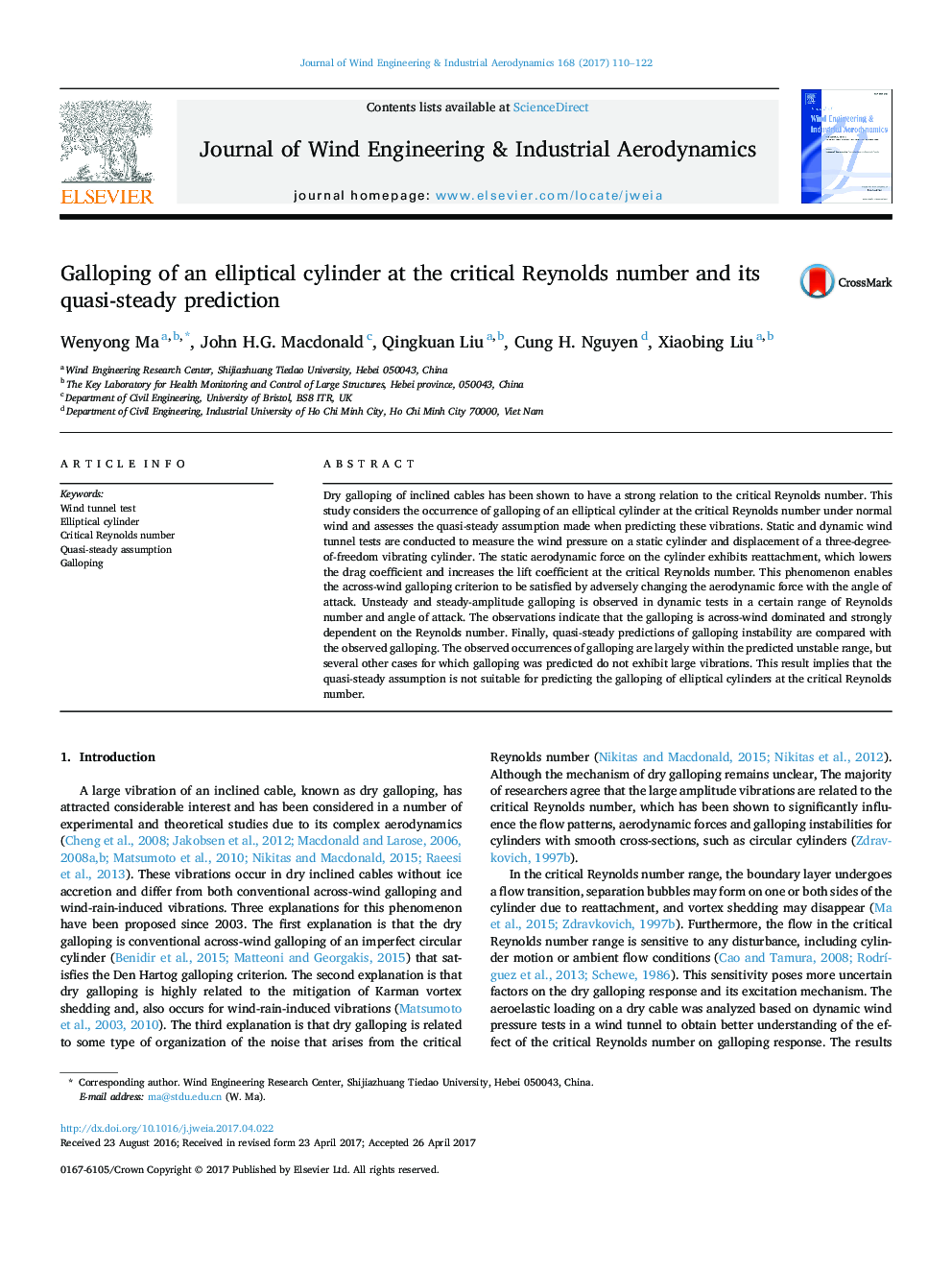| Article ID | Journal | Published Year | Pages | File Type |
|---|---|---|---|---|
| 4924802 | Journal of Wind Engineering and Industrial Aerodynamics | 2017 | 13 Pages |
Abstract
Dry galloping of inclined cables has been shown to have a strong relation to the critical Reynolds number. This study considers the occurrence of galloping of an elliptical cylinder at the critical Reynolds number under normal wind and assesses the quasi-steady assumption made when predicting these vibrations. Static and dynamic wind tunnel tests are conducted to measure the wind pressure on a static cylinder and displacement of a three-degree-of-freedom vibrating cylinder. The static aerodynamic force on the cylinder exhibits reattachment, which lowers the drag coefficient and increases the lift coefficient at the critical Reynolds number. This phenomenon enables the across-wind galloping criterion to be satisfied by adversely changing the aerodynamic force with the angle of attack. Unsteady and steady-amplitude galloping is observed in dynamic tests in a certain range of Reynolds number and angle of attack. The observations indicate that the galloping is across-wind dominated and strongly dependent on the Reynolds number. Finally, quasi-steady predictions of galloping instability are compared with the observed galloping. The observed occurrences of galloping are largely within the predicted unstable range, but several other cases for which galloping was predicted do not exhibit large vibrations. This result implies that the quasi-steady assumption is not suitable for predicting the galloping of elliptical cylinders at the critical Reynolds number.
Keywords
Related Topics
Physical Sciences and Engineering
Energy
Renewable Energy, Sustainability and the Environment
Authors
Wenyong Ma, John H.G. Macdonald, Qingkuan Liu, Cung H. Nguyen, Xiaobing Liu,
